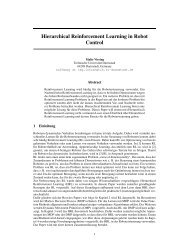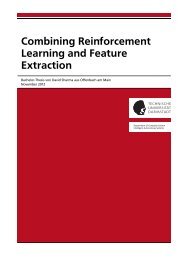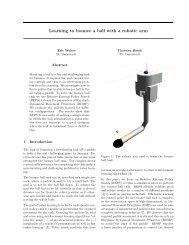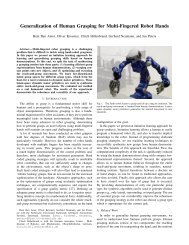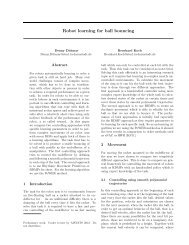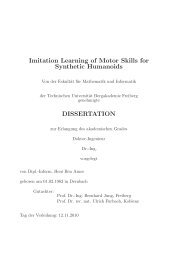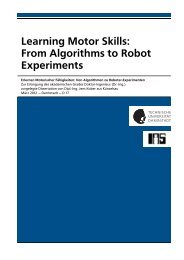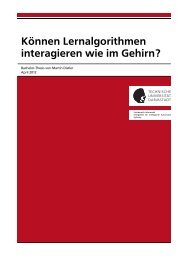Lifecycle of a Jeopardy Question Answered by Watson DeepQA
Lifecycle of a Jeopardy Question Answered by Watson DeepQA
Lifecycle of a Jeopardy Question Answered by Watson DeepQA
You also want an ePaper? Increase the reach of your titles
YUMPU automatically turns print PDFs into web optimized ePapers that Google loves.
3.3.2 Evidence Retrieval and ScoringFor every candidate:Evidence scorers 1 ... n, such astaxonomy, sounds like, source reliability,semantic, geospatial, temporal relations, ...Figure 7: Evidence ScoringEvery candidate that passed s<strong>of</strong>t filtering, still has a chance to become the final answer. In orderto rank candidates, <strong>Watson</strong> employs an ensemble <strong>of</strong> independent scorers. Each scorer measures aspecific aspect, such as different types <strong>of</strong> relationships.For our first example it might detect a short path in a graph based thesaurus, or it might calculate ahigh amount <strong>of</strong> coreferences that the terms “puncture pointed” and the candidate “stick” share.For our second example clue, it might detect that “Wolfgang Amadeus Mozart” can be classified ascomposer, based on taxonomy lookups.<strong>Watson</strong> has many different <strong>of</strong> such evidence scorers, to cover a large range <strong>of</strong> different domains. Forexample it contains a method that calculates the scrabble score <strong>of</strong> an answer candidate, or generalpurpose methods like calculating the TF-IDF <strong>of</strong> an answer in combination with the question. [3]3.3.3 Answer MergingBy merging semantically equivalent answers, <strong>Watson</strong> has a better chance to rank the best answeron top <strong>of</strong> the list, because equivalent answers would compete against each other during ranking.[3] Depending on the answer type this can be done <strong>by</strong> synonymy, arithmetic equality, geospatialdistance or other measures, such as semantic relatedness. Ideally <strong>Watson</strong> would merge the answers“Mozart” and “Wolfgang Amadeus Mozart” and combine their results from evidence scoring. Toachieve merging <strong>of</strong> semantically equivalent answers, <strong>DeepQA</strong> can employ methods like normalization,matching algorithms or calculation <strong>of</strong> semantic relatedness. [3] A measure that would indicatethe semantic relatedness <strong>of</strong> two answer terms would be Pointwise Mutual Information (PMI), ameasure <strong>of</strong> statistical dependence <strong>of</strong> two terms [8]:P (A | B)P MI(A, B) = logP (A)P (B)Where P (A) and P (B) are be the probabilities <strong>of</strong> the terms A and B in a given text corpus andP (A | B) is the probability <strong>of</strong> cooccurrence <strong>of</strong> both terms in documents or smaller units <strong>of</strong> thecorpus. The higher the value, the stronger is the considered semantic connection between bothphrases.3.3.4 Ranking and Confidence EstimationTaking the output vector <strong>of</strong> the evidence scoring as an input parameter, <strong>Watson</strong> can now calculate anoverall ranking for the candidates. Again, <strong>Watson</strong> does not have to trust a single ranking algorithm.Instead it can employ an ensemble <strong>of</strong> algorithms and calculate the arithmetic mean <strong>of</strong> the rankingscores for each candidate. For the first example clue, the answer “stick” gets a much higher rank thanthe answers “lumber” and “bark”, since the latter two answers only correlate with the first subclue,while evidence scoring is likely to return no matches for the second subclue. The more evidencefor an answer was found <strong>by</strong> evidence scorers, the higher is the confidence <strong>of</strong> that answer. <strong>Watson</strong>sconfidence level for the answer “stick” was above a certain threshold and so <strong>Watson</strong> decided tobuzzer.11



